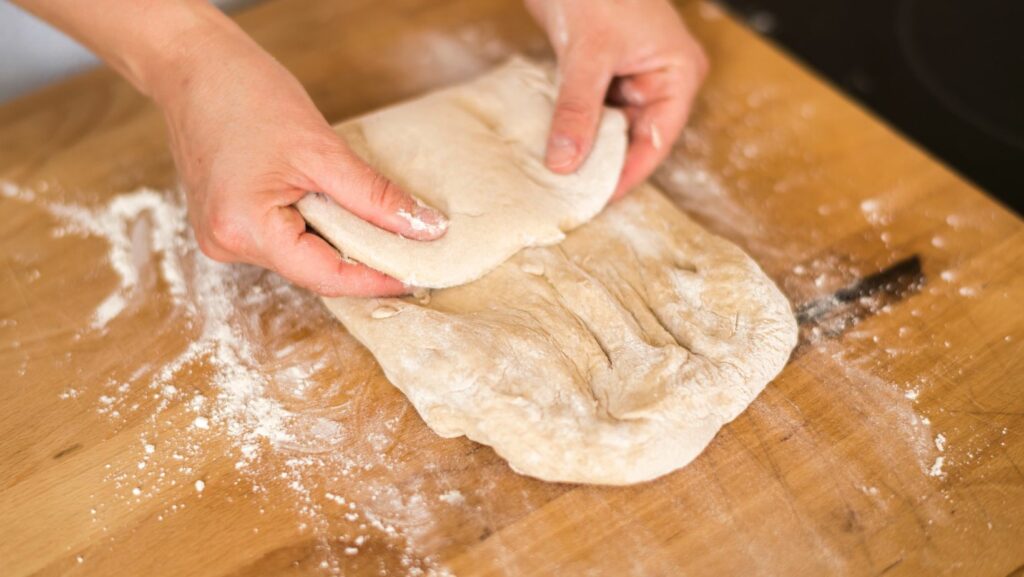If you’re looking to master the art of bread-making, knowing how to knead dough is an essential skill. Kneading is a technique that helps develop the gluten in the dough, giving bread its structure and texture. In this article, I’ll guide you through how to knead bread effectively, ensuring your loaves come out perfectly every time.
How to Knead Bread
- Gather your ingredients and combine them according to your recipe. Once your dough is mixed, it’s time to begin kneading.
- Lightly flour a clean surface or use a silicone mat to prevent sticking.
- Place the dough onto this surface and gently press it down with the heel of your hand.
- Next, fold the dough in half towards you and push down again using the heel of your hand. Rotate the dough slightly clockwise and repeat this folding and pushing motion. Continue this process for 10-15 minutes or until the dough becomes smooth and elastic.
Remember to maintain a gentle but firm pressure as you knead, being careful not to overwork the dough. Add small amounts of flour as needed if it starts sticking too much. Once properly kneaded, shape your dough into a ball and let it rest before baking.
By following these simple steps on kneading bread properly, you’ll be well on your way to creating delicious homemade loaves that impress family and friends alike. So roll up those sleeves and get ready to experience the satisfaction of making fresh bread from scratch!

Preparing the Ingredients
When kneading bread, proper preparation of the ingredients is crucial. Follow these steps to ensure a successful baking experience:
- Gather your ingredients: Before you begin, gather all the ingredients for your bread recipe. This typically includes flour, yeast, water, salt, and other flavorings or additives.
- Measure accurately: Accurate measurements are essential for achieving the right consistency in your dough. Use measuring cups and spoons for dry and liquid ingredients to ensure precision.
- Sift the flour: Sifting the flour helps aerate it, removing any lumps and making it easier to incorporate into the dough. Measure out the required amount of flour and sift it into a large mixing bowl.
- Activate the yeast: If using active dry yeast, activate it by dissolving it in warm water according to package instructions. Let it sit for a few minutes until frothy and bubbly before adding it to the rest of your ingredients.
- Weigh down liquids: When measuring liquids such as water or milk, use a kitchen scale instead of relying solely on volume measurements. This ensures accuracy since different drinks can have varying densities.
- Add salt last: Salt can directly inhibit yeast activity if they come into direct contact during mixing. To prevent this from happening prematurely, add salt as one of the final ingredients after combining other dry and wet components.
- Incorporate gradually: When combining dry and wet ingredients, do so gradually rather than dumping everything in at once – especially when adding liquid to the flour mixture while kneading by hand or using a stand mixer.
Remember that every bread recipe may have specific ingredient preparation requirements; therefore, always refer to your chosen recipe for any unique instructions or variations.
By properly preparing your ingredients before starting the kneading process, you set yourself up for kneading success and, ultimately, delicious homemade bread. So let’s get started on the next step: kneading the dough!

